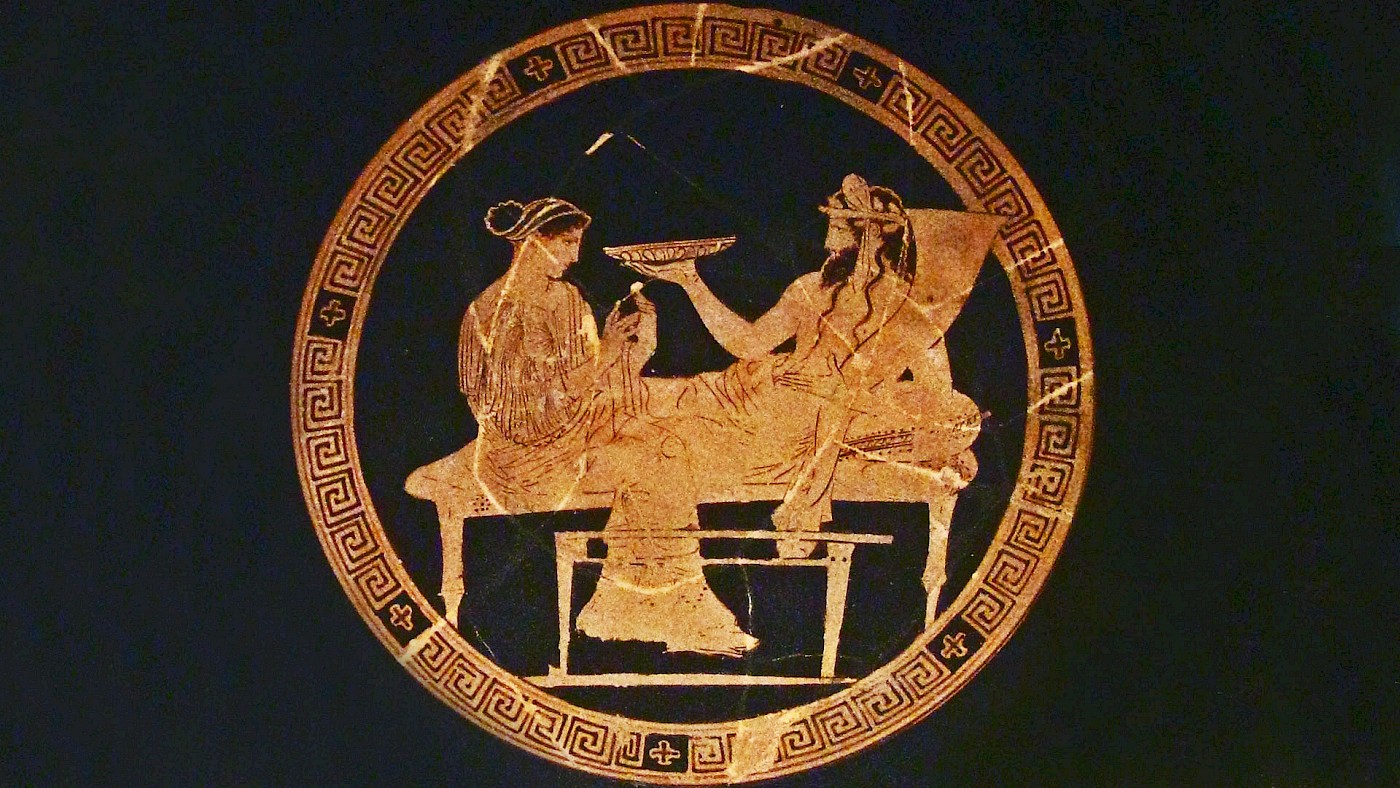Pictured in the photo above is the tondo (a round painting) on the inside of an Attic red-figure cup that is said to be from Vulci, Italy, and dated to 440–430 BC. Cups like these were used during symposia, the meetings that Greek men organized to drink, talk, and generally hang out together.
The cup is on display at the British Museum. What struck me most about it was the description on the accompanying plaque, which bore the heading “Partying with death”. It’s rare that I find texts in museums inspired, as most seem entirely perfunctory, but this one stuck with me.
The scene features two figures, one male, reclining on a couch, and the other female. The male figure has been identified as Hades, the divine ruler of the underworld. How so, you might ask? In his right hand, he holds a phiale (libation bowl), which is a fairly generic vessel. But his left arm is wrapped around a cornucopia or horn of plenty.
According to Greek myth, the horn had once belonged to Amaltheia, a goat who had few Zeus when he was infant. As a reward for her services, Zeus turned one of her horns into a horn of plenty. It became an attribute of Hades because, as the god of the underworld, he was associated with the earth and the riches it contained, such as precious metals and gems. As a result, the ancient Greeks referred to Hades euphemistically as Ploutōn, “the rich” (which the Roman latinized to Pluto).
The woman sitting on the couch with Hades must almost certainly be his wife, Persephone. Hades had fallen in love with Persephone – called Proserpina by the Romans – and abducted her. Her mother, Demeter, the goddess of fertility and agriculture, was inconsolable. But by the time that the gods demanded the return of Persephone it was already too late: Hades had given her the seeds or fruit of the pomegranate to eat, which meant that she was bound to the underworld.
A deal was struck. Persephone would marry Hades and spend six months of the year with him there, deep inside the earth. The other six months of the year she would dwell on Olympus with her mother, Demeter. This is how the ancient Greeks explained the seasons: when Persephone left for the underworld, Demeter would become sad and the land destitute, signalling the onset of winter; upon her return, Demeter would be gladdened again, giving way to spring and summer.
Looking at this scene, you might think that with two figures here it’s not much of a party. But there’s more to this cup can is evident in the photo above. The outside of the vessel is features the other Olympian gods assembling for a drinking party. Hades and his wife are perhaps to be interpreted as the guests of honour; perhaps this is the first time in half a year that Persephone has returned to Olympus.
